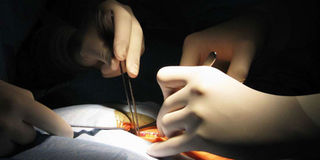New machine to give liver patients second chance

Many hospitals across the world, including in Kenya, grapple with a shortage of body organs such as livers and kidneys. PHOTO | FOTOSEARCH
Desperate patients in need of a liver transplant will soon find relief following a breakthrough development. Researchers created a machine that can repair injured human livers and keep them alive outside the body for one week.
The machine, developed by researchers in Zurich, not only brings hope to patients in need of liver transplants, but also paves way for an increase in the availability of other organs for transplantation, potentially saving the lives of thousands.
Many hospitals across the world, including in Kenya, grapple with a shortage of body organs such as livers and kidneys, whose demand is on the rise due to diseases such as cancer and renal failures. Before this development, livers could only be stored safely outside the body for a few hours. But, the machine can now store both injured and viable livers for seven days.
“This is a major breakthrough in transplantation medicine, which may increase the number of available organs for transplantation and save many lives of patients suffering from severe liver disease or a variety of cancers. Injured cadaveric livers, initially not suitable for use in transplantation, may regain full function while perfused (supplied with blood by circulating it through vessels or other natural channels) in the new machine for several days,” the research stated.
Department of Surgery and Transplantation at University Hospital Zurich chairman, Prof Pierre-Alain Clavien, who was part of the research team, said the basis for the technology of the new machine was a complex perfusion system, mimicking most core body functions close to physiology.
“The success of this unique perfusion system that was developed over a four-year period by a group of surgeons, biologists and engineers paves the way for many new applications in transplantation and cancer medicine, helping patients with no liver grafts available,” he said.
The machine works by constantly pumping blood and oxygen to the donated liver to keep it alive while the old blood is sucked out of the liver. When the blood is removed, it is filtered through a dialysis system to remove waste, mimicking the human kidneys.
The machine, which maintains the liver at a temperature of three degrees Celsius, also removes bile from the donated liver, which, if left, could be poisonous to the organ. In addition, the machine also contains an artificial diaphragm that constantly moves the liver to prevent it from being damaged by pressure of resting in the same place. Under these conditions, the study showed that the damaged livers could be able to regenerate itself.
The four-year study was published in the scientific journal Nature Biotechnology.



